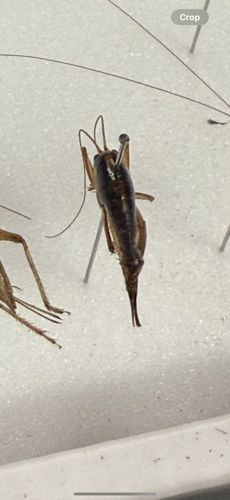Camel Cricket
Scientific Name: Ceuthophilus sp. (or other genera within Rhaphidophoridae)
Order & Family: Orthoptera, Rhaphidophoridae
Size: 1-5 cm (0.4-2 inches) long, with long antennae potentially doubling their perceived length.

Natural Habitat
Damp, dark environments such as caves, hollow logs, basements, crawl spaces, and under rocks/leaves.
Diet & Feeding
Omnivorous scavengers, feeding on organic matter, fungi, plants, dead insects, and sometimes fabrics or stored foods.
Behavior Patterns
Nocturnal; they are known for their strong jumping ability. Unlike true crickets, they do not chirp. They are often associated with human dwellings due to their preference for cool, moist environments.
Risks & Benefits
Generally harmless to humans, though large populations can be considered a nuisance pest in homes, occasionally damaging fabrics or plants. They can be a food source for other animals.
Identified on: 9/19/2025